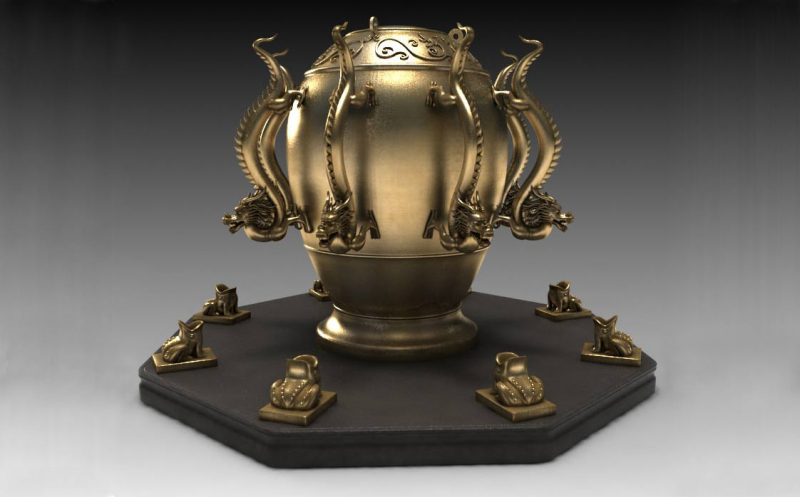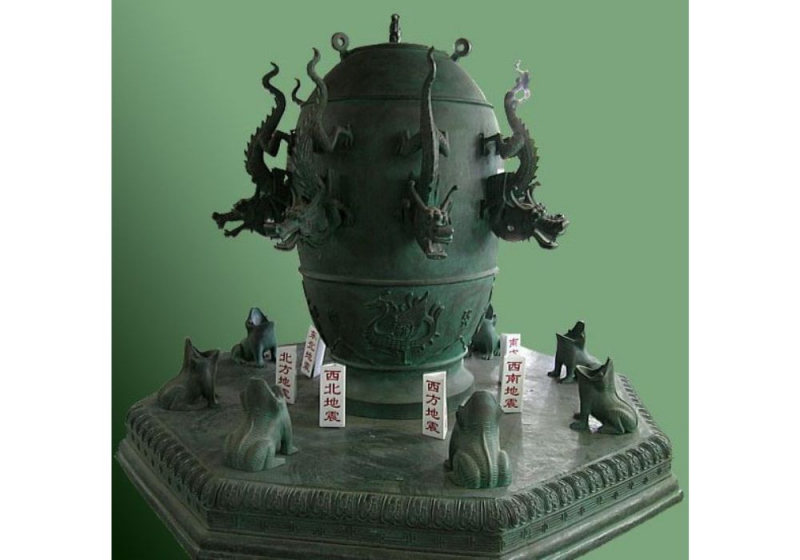The Seismograph
The earliest seismograph, dubbed "Houfeng Didong," was created in 132 AD by Han dynasty inventor Zhang Heng (78–139 AD) to track earth motions and seasonal winds. The seismograph was a copper device in the shape of an urn that had a pendulum in the middle.
A sizable "fine cast bronze" vessel with a lid served as the seismograph. Eight dragons' heads are evenly distributed all around the vessel, pointing in the eight directions (east, south, west, north, southeast, northeast, southwest, and northwest) while holding bronze balls in their mouths. Eight similar bronze toads with gaping jaws were arranged around the vessel's base. If pushed or "shaken," the ball would fall into the toad's mouth that it corresponded to. During an earthquake, the dragon's mouth that was closest to the epicenter opened, letting the ball fall into the frog's mouth, making a sound. This informs people of the earthquake's direction.
Therefore, it was important to be aware of when a calamity struck a certain location. A government might not have had enough time to gather troops and prepare aid by the time the news reached the palace. As a result, Zhang Heng (AD 78–139), a Chinese physicist, mathematician, and inventor, created the seismograph, which is still used today to measure earthquakes.










